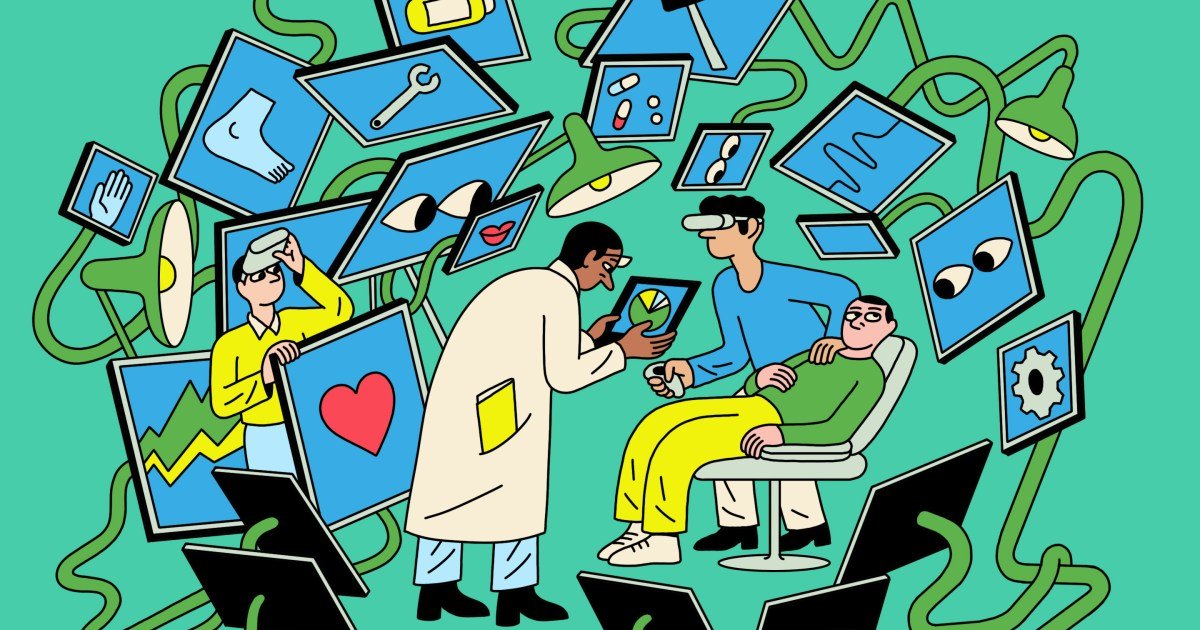
AI is changing the way employees train, and is starting to reduce the amount of training they need

Mastering AI tools is quickly becoming one of the most important skills, and companies are working to train their employees on how to use them. At the same time, AI is also emerging as a useful training tool in its own right.
Across industries, AI is helping companies create training materials faster and more efficiently, as well as allowing them to design new, more interactive methods for training workers. AI technology is also enabling the shift towards on-the-job learning that can guide employees in real time. The benefits can be wide-ranging, from huge cost savings for businesses to providing a safer place to simulate tasks where the cost of error can be prohibitive.
Creating training content just got easier
BSH Home Appliances, a subsidiary of the multinational technology group Bosch groupuses an AI-generated video platform called Synthesia to create material ranging from compliance training to technical training. The platform allows users to quickly create videos from prompts or documents and include generic avatars in their videos or even AI avatars. Videos can range from 2 to 45 minutes in length, and the company has dramatically expanded its use of the platform after seeing a 70% cost savings in outsourced video production.
Previously, corporate learning and development teams had to purchase training video content from a vendor or host and repeatedly record training sessions. Lindsay Bradley, learning and development partner at BSH, says the platform reduced teaching hours for facilitators and allowed a wide range of stakeholders across the company to seamlessly create and update training videos as often as needed. Another key advantage is the ability to translate and localize training content on the spot, a typically expensive but essential task for a multinational company with employees in multiple countries.
“One of our training sessions covering energy, environmental and health compliance was created using the platform,” says Bradley. “In the employee learning centre, the training session is delivered in more than 10 languages, and all the trainer has to do is switch the language in the system.” “The content and script could remain the same. There was no need for language experts, actors, etc., because the platform provides a wide range of languages already available from which our L&D teams can choose for our videos.”
While customers are increasingly using the platform to create videos for all different purposes, employee training and learning and development has been the most popular use case by far, says Synthesia co-founder and CEO Victor Riparbelli. The company continues to leverage advances in artificial intelligence to make videos more engaging, moving beyond streaming to interactive choose-your-own-adventure-style videos that provide personalized training paths to meet individual needs.
“An interactive AI-powered video in Synthesia might start out the same for everyone, but might branch out into a more detailed explanation for more advanced viewers, for example,” Riparbelli says.
Welcome to the simulation
Sometimes, watching a video isn’t enough. Here comes the role of simulation training.
For example, researchers at the New Jersey Institute of Technology, Robert Wood Johnson Medical School, and software company Robust AI have developed AI-powered software to teach and simulate the basic principles of laparoscopic surgery. Using actual tools used in surgery, medical students complete exercises to move rings between pegs without dropping them and within a short period of time, simulating the precise movements that surgeons need to complete with rapid accuracy.
The team used convolutional neural networks to train the model to recognize different components. Another neural network, trained on the correct sequence of actions for a user to follow, then detects when the user is out of sequence, enabling the program to provide feedback to correct their actions.
Modern He studies This year the software has shown that the software is as good and even slightly better than human faculty raters when assessing surgical skills. Currently, students use the program informally, but it is moving towards becoming a formal part of the curriculum. Since surgical training involves significant supervision and input from senior surgeons who are usually already overwhelmed with responsibilities, and since mistakes come with significant costs, improvements that allow students to undertake more realistic training in low-stress settings have enormous potential.
“An app like ours helps reduce medical errors,” says Usman Roshan, an associate professor of computer science at New Jersey Institute of Technology who has been collaborating on the program. “Students can practice whatever they want in the app before they get into the operating room.”
However, the benefits of enhanced AI-powered simulation training extend beyond the operating room. Strivr, a company that combines artificial intelligence and virtual reality to create immersive training experiences, serves clients across logistics, transportation, retail and other industries, such as WalmartVerizon, and Amazon. Strivr uses AI to create personalized content for clients (to create avatars for 3D environments, for example) and also to enhance the user-facing capabilities that make up the training experience, such as AI-powered dynamic conversation capabilities. Previous training courses included only scripted dialogue, but recent advances in artificial intelligence allow users to engage in more natural, non-linear conversations with avatars in their training simulations.
“AI allows for a more realistic training experience that is applicable to the real world,” says Strivr Founder and CEO Derek Belch.
Seek real-time training
Thanks to AI, Strivr is also making progress on its next frontier: augmented reality-powered experiences that guide workers in real time and connect them to the information they need while doing their work. The company is working with 10 design partners to create early versions of its real-time routing platform, called WorkWise.
“The end result of all this will be someone — let’s just say a warehouse worker — putting packages on a truck,” Belch says. “They’ll be wearing smart glasses, and the glasses will tell them what to do in real time. And that’s kind of ironic, given what we’ve been doing for the last 10 years, but maybe you won’t have to train people, or you’ll dramatically reduce the amount of training time required.”
While smart glasses are still in their infancy and this vision is still a work in progress, AI is already powering real-time orientation experiences across smartphones and other wearable devices, reducing the need for upfront training as a result. For example, Alex Hawkinson, CEO of BrightAI, a company that creates AI solutions for labor industries, worked with a manufacturer of custom pool covers to do just that. Traditionally, the two workers would spend an entire afternoon manually measuring the pool and creating a CAD model of the shell design. The company has developed an autonomous scanning system and an accompanying co-pilot, or co-pilot, that provides real-time guidance to command the operation, builds models on the spot, and then generates a cost estimate for the mission.
Real-time guidance greatly speeds up the manufacturing process and reduces measurement errors, but it also makes these jobs more available to less-trained workers, Hawkinson says. Across the different industries BrightAI works in, such as HVAC and energy infrastructure, he says real-time routing makes it possible to reduce training requirements and deploy new employees productively.
“It doesn’t have to be a highly trained person to do the measurement,” he says. “It’s talking directly to the manufacturing system.” “So as the person sits there with the customer in their home, it shows the quote and what the cover will look like. It helps them visualize that with the co-pilot that we built for that operator, and then the customer can say ‘yes’ and they can be there in three days.”












Post Comment